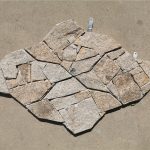Introduction
Cultured basalt, also known as basalt fiber reinforced polymer (BFRP), is a revolutionary material that has been gaining popularity in various industries due to its exceptional properties and sustainable nature. This article aims to provide a comprehensive guide to cultured basalt, exploring its production process, properties, applications, advantages, and future prospects.
Production Process of Cultured Basalt
Cultured basalt is produced through a sophisticated manufacturing process that involves melting natural basalt rock at high temperatures and then extruding it into thin fibers. The key steps involved in the production process of cultured basalt are as follows:
1. Basalt Rock Extraction: Basalt is a volcanic rock that is commonly found in abundance in certain regions of the world. The first step in the production of cultured basalt is to extract basalt rocks from quarries or mining sites.
2. Melting Process: The extracted basalt rocks are crushed and then heated to extremely high temperatures in a furnace. The molten basalt is then extruded through platinum-rhodium bushings to form continuous basalt fibers.
3. Fiber Formation: The extruded basalt fibers are coated with sizing agents to improve their adhesion properties and then wound onto spools. The fibers can be further processed into rovings, yarns, fabrics, or tapes depending on the intended application.
Properties of Cultured Basalt
Cultured basalt exhibits a unique combination of properties that make it an attractive alternative to traditional materials such as steel, fiberglass, and carbon fiber. Some of the key properties of cultured basalt include:
1. High Strength and Stiffness: Cultured basalt fibers have high tensile strength and stiffness, making them suitable for applications requiring structural integrity and load-bearing capacity.
2. Lightweight: Cultured basalt is significantly lighter than steel and many other traditional construction materials, which helps reduce the overall weight of structures and vehicles.
3. Corrosion Resistance: Basalt fibers are inherently resistant to corrosion, making them ideal for applications in harsh environments or corrosive conditions.
4. Thermal Stability: Cultured basalt exhibits excellent thermal stability, withstanding high temperatures without significant degradation, making it suitable for applications in high-temperature environments.
5. Fire Resistance: Basalt fibers have a high melting point and do not burn, making them highly fire-resistant and suitable for fire protection applications.
Applications of Cultured Basalt
Cultured basalt has a wide range of applications across various industries due to its exceptional properties and versatility. Some of the common applications of cultured basalt include:
1. Construction and Infrastructure: Cultured basalt is used in the construction industry for reinforcing concrete structures, manufacturing rebar, and producing high-performance composites for building facades, bridges, tunnels, and roads.
2. Aerospace and Defense: Cultured basalt fibers are used in the aerospace and defense sectors for manufacturing lightweight and high-strength components such as aircraft parts, missile casings, and armor panels.
3. Automotive Industry: Cultured basalt is increasingly being used in the automotive industry for producing lightweight and durable components such as car body panels, engine parts, and chassis reinforcements.
4. Marine Industry: Basalt fibers are used in the marine industry for manufacturing boat hulls, marine structures, and offshore platforms due to their corrosion resistance and durability.
5. Sports and Leisure: Cultured basalt is used in the sports and leisure industry for producing high-performance equipment such as tennis rackets, golf clubs, bicycles, and helmets.
Advantages of Cultured Basalt
Cultured basalt offers numerous advantages over traditional materials, making it a preferred choice for many applications. Some of the key advantages of cultured basalt include:
1. Sustainability: Basalt is a naturally occurring mineral that is abundant and renewable, making cultured basalt a sustainable alternative to synthetic fibers and composites.
2. Energy Efficiency: The production of cultured basalt requires less energy compared to the manufacturing of other synthetic fibers, reducing carbon emissions and energy consumption.
3. Cost-Effectiveness: Cultured basalt is cost-effective compared to carbon fiber and other high-performance materials, making it an attractive option for various industries.
4. Environmental Friendliness: Basalt fibers are non-toxic, recyclable, and biodegradable, reducing the environmental impact of manufacturing and disposal.
5. Performance: Cultured basalt offers excellent mechanical properties, thermal stability, and corrosion resistance, outperforming many traditional materials in terms of performance and durability.
Natural stone stepping stones for garden paths of Cultured Basalt
The future prospects of cultured basalt are promising, with ongoing research and development efforts aimed at enhancing its properties, expanding its applications, and increasing its market penetration. Some of the key trends and developments in the cultured basalt industry include:
1. Advanced Manufacturing Techniques: Researchers are exploring advanced manufacturing techniques such as 3D printing and automated production processes to enhance the performance and cost-effectiveness of cultured basalt products.
2. Composite Material Innovations: Cultured basalt is being combined with other materials such as polymers, resins, and nanoparticles to develop advanced composite materials with tailored properties for specific applications.
3. Green Building Initiatives: Cultured basalt is gaining traction in the green building sector as a sustainable and energy-efficient material for constructing eco-friendly buildings and infrastructure.
4. Automotive Lightweighting: The automotive industry is increasingly adopting cultured basalt for lightweighting vehicles to improve fuel efficiency, reduce emissions, and enhance performance.
5. Infrastructure Renewal: Cultured basalt is being used in infrastructure renewal projects to reinforce aging structures, improve durability, and extend the service life of bridges, roads, and buildings.
Conclusion

Cultured basalt represents a breakthrough in material science with its exceptional properties, sustainable nature, and versatile applications across various industries. As research and development efforts continue to drive innovation in the cultured basalt industry, the potential for this remarkable material to revolutionize construction, aerospace, automotive, and other sectors remains promising. With its numerous advantages, including sustainability, cost-effectiveness, and performance, cultured basalt is poised to play a significant role in shaping the future of materials engineering and manufacturing.
